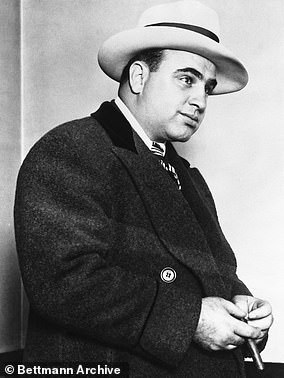Al Capone’s speakeasy speakeasy revealed in disturbing photos
>
Haunting footage reveals the wrecked party boat where Al Capone’s guests enjoyed booze-filled celebrations during prohibition.
Built as a wooden barge in 1889, the Keuka changed hands in 1928 and was soon transformed into a floating ballroom complete with live music and bar.
And the man who kept the booze flowing was none other than the notorious gangster Al Capone, according to local lore.
But bad luck followed the Keuka: her manager was shot by a drunk customer, and the ship mysteriously sank in August 1932.
Haunting footage reveals wrecked party boat where Al Capone’s guests enjoyed booze-filled celebrations during prohibition
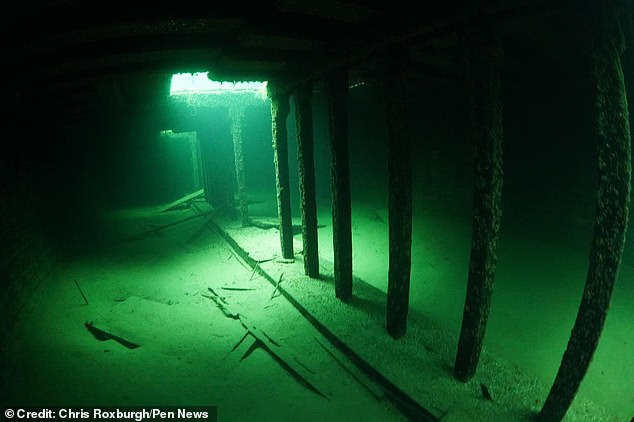
Built as a logging barge in 1889, the Keuka changed hands in 1928 and was soon transformed into a floating dance hall with live music and bar.
Now the shipwreck has been revealed in spooky new images.
Chris Roxburgh documented the ship below the surface of Lake Charlevoix, Michigan, during a visit with fellow diver Lee Rosenberg.
He said: ‘My belief and local lore is that Capone and his men supplied this casino ship during its prohibition-era time of operation from 1929 to 1932.
‘Capone had a house near Charlevoix and people say they have seen him in those years. He had several “tuck houses in northern Michigan,” an easy drive from Chicago.
“Rumor is, after the ship’s manager on board was shot, it was scuttled by a local church group who were tired of devil parties, alcohol, music, drinks and women.”
He continued: “When I dive this wreck, I imagine what it was like in 1929 when the parties and gambling were strong, and the alcohol flowed like a river.”
“Inside, the ship has long open areas, as the ship is 200 feet long and over two stories tall.
‘The spotlight shines through the portholes casting shadows that move as we move through the party barge.
“The wreck is intact and upright with good lighting and very clear water. It lurks eerily below the surface with many stories to tell.
The ship’s reputation as a speakeasy was well established.
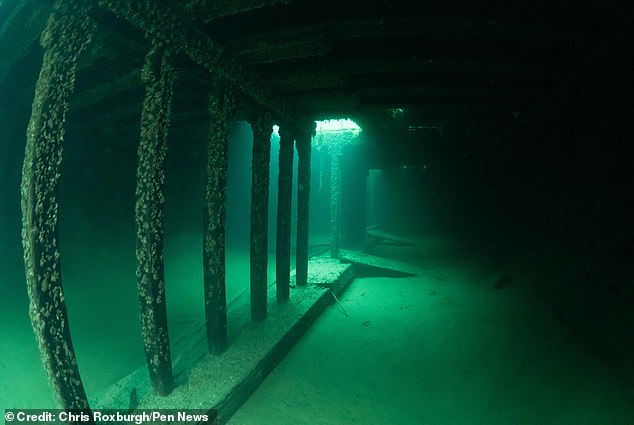
Chris Roxburgh documented the ship below the surface of Lake Charlevoix, Michigan, during a visit with his dive buddy, Lee Rosenberg.
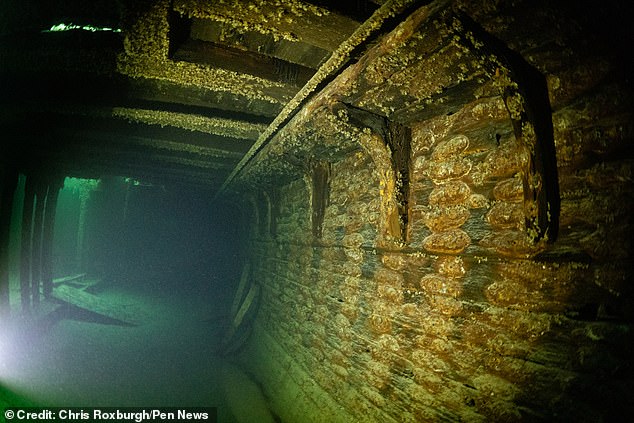
The boat was “one of the places everyone knew you could have a drink” during prohibition, reports the Northern Express, a Michigan newspaper.
It was “one of the places everyone knew you could have a drink” during prohibition, reports the Northern Express, a Michigan newspaper.
And from the middle of Lake Charlevoix, he had a vantage point on every approach, avoiding surprises from the police.
“I imagine someone is getting paid; everyone can hear and see the festivities from the shoreline,” said Mr. Roxburgh.
But it was not easy for the Keuka.
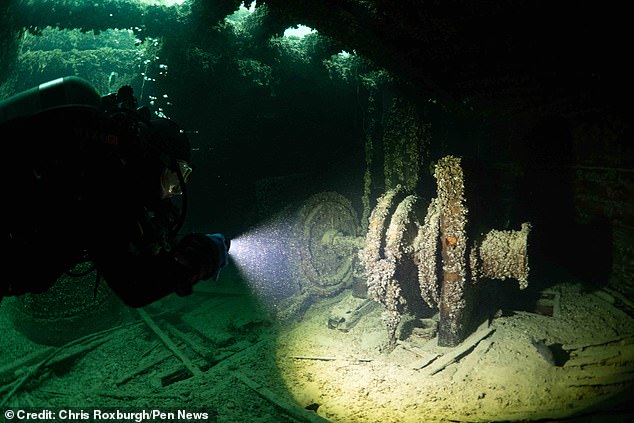
From the center of Lake Charlevoix, the ship had an advantageous position on each approach, avoiding surprises from the police.
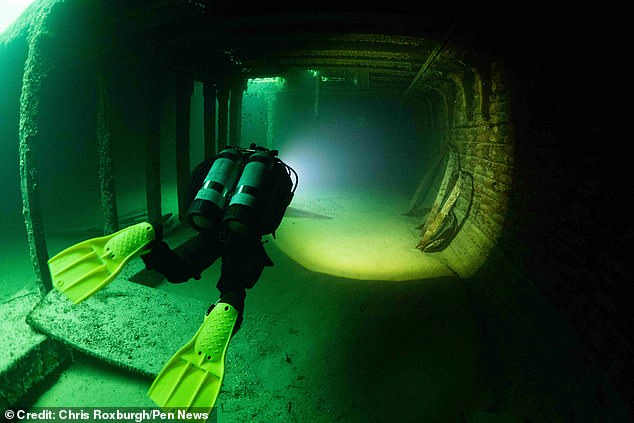
The ship was old and so dilapidated that it reportedly had to be pumped daily, and a man hired for the job was rumored to have been paid in whiskey.
It was old and so dilapidated that it reportedly had to be pumped out daily, and a man hired for the job was rumored to have been paid in whiskey.
Then, on New Year’s Day 1931, a story broke that sealed his fate.
Ed Latham, the barge’s manager, was shot by a drunk customer, said The Boyne Citizen, a newspaper based in Boyne City, on the lake’s southeast shore.
The fate of the shooter and his victim is unclear, but he reportedly caused Captain JH Gallagher to close the store.
The following year, the Keuka sank.
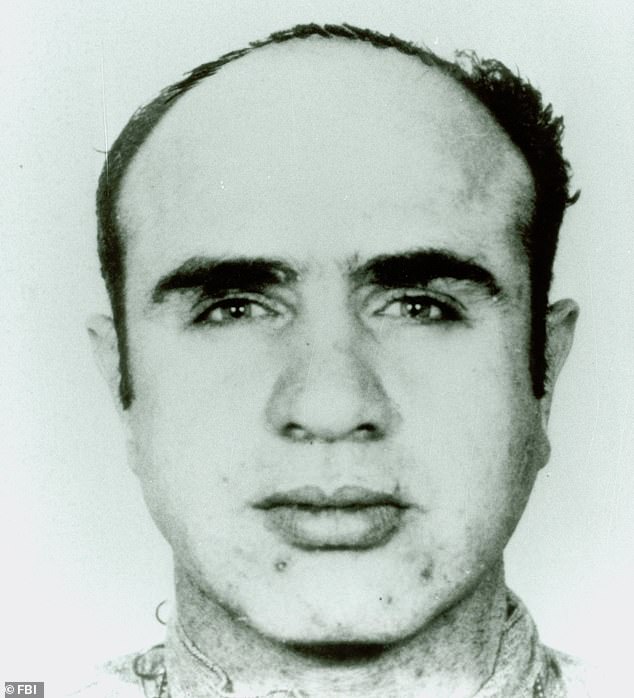
Alphonse Capone (pictured in his 1939 mugshot) may be the most celebrated or infamous mobster in American history.
A contemporary account of the sinking cited by the Northern Express was unable to find an explanation for how it happened.
It read: ‘The Keuka was traveling safely on Saturday with no evidence that he would find her at the bottom of the lake a few hours later.
‘However, something happened, and the ship sank.
“There was some cause for the change in conditions, but at this time the reason is undefined and a matter of public conjecture.”
Today the Keuka lies at a depth of 50 feet, a short distance from the town of Charlevoix.

